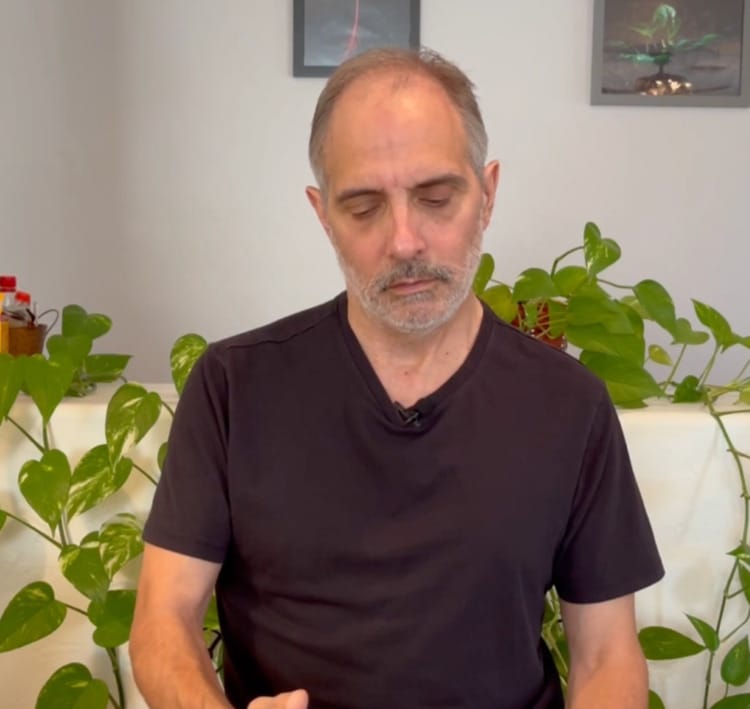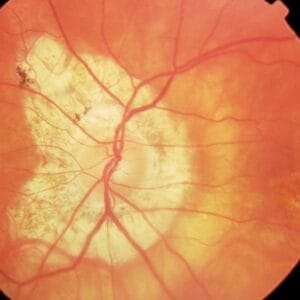March 11, 2024
Patient-centered glaucoma is a concept in which the patient is involved in their care, as compared to a passive approach in which the patient takes medication or has surgery with little other engagement. In the patient-centered approach, the patient is aware of their diagnosis and knowledgeable about glaucoma. They understand therapeutic options, both medical, non-medical, and surgical, and work with their doctor to ensure that therapy is tailored to them. The patient may be involved in home monitoring such as with an intraocular pressure (IOP) monitor or virtual reality perimeter, though home testing is still evolving.
There is evidence that diet, exercise, greater physical activity, and reducing alcohol use and cigarette smoking may lower IOP and reduce the chance of glaucoma developing.1,2,3,4,5,6,7 In addition, a paper by Dada published in the Journal of Glaucoma in 2018, showed that mindfulness meditation has been shown to lower IOP.8 This was a prospective, randomized trial in which 90 primary open-angle glaucoma (POAG) patients were randomized to a control or mindfulness mediation group (MM) with meditation practiced for 21 days. Under the supervision of a certified meditation teacher, each subject practiced deep breathing exercises for 15 minutes followed by 45 minutes of meditation. IOP, a quality of life (QOL) questionnaire, and blood samples were analyzed before and at the end of the study. IOP was reduced approximately 25% in the MM group, and the QOL survey showed positive responses in the MM group. Gene expression was modified for those genes associated with the regulation of IOP. Stress biomarkers such as cortisol levels were also reduced in the MM group. The paper’s conclusions were that MM may be an adjunctive therapy for POAG. This excited many individuals in the glaucoma community. Follow-up studies were published confirming that MM may be useful in a host of glaucoma conditions, including those with advanced glaucoma who require trabeculectomy.9,10
‘365 Breathing Technique’ vs. Mindfulness Meditation
Since the first paper on MM was published, the question became how to make it a reasonable adjunctive therapy. There may be a rare individual who will practice this time-consuming technique, but for many of our patients, who often do not refill their medications, how can we expect them to spend an hour per day meditating?11 I have been waiting for a follow-up paper showing how much the IOP would be reduced if MM is done every other day, or weekly, or 10 minutes per day. In other words, if MM is modified to more manageable levels, how does it change the outcome?
In a paper just published in the Journal of Glaucoma,12 Dada and colleagues describe the effect of “365 Breathing Technique” on IOP and autonomic functions in glaucoma patients. “365 breathing” is a technique often recommended by therapists for relaxation and to reduce stress in which individuals perform the breathing technique three times per day with each session lasting five minutes.13,14 The person breathes six times per minute, inhaling for five seconds followed by exhaling for five seconds. The theory behind “365 breathing” is to slow and steady the breathing, which should decrease heart rate and relax muscles. There are a host of papers that have described the breathing technique13,14 with videos available on YouTube showing the technique.
This study was conducted as a controlled, single blinded, interventional trial. In the study, 80 patients with early POAG were randomized to two groups (intervention or control) with all patients continuing their glaucoma medications. For the intervention group, everyone was taught the “365 Breathing Technique.” Each subject was told that breathing should be smooth, slow, deep, and through the nose. Patients did their first session upon awakening, the next before lunch, and the last at the end of their workday. Each patient maintained a logbook and used a watch to time their breaths. IOP and testing was done at baseline and six weeks. At six weeks, the IOP was reduced in the breathing group by 11%, with no change occurring in the control arm. There was also a decrease in the heart rate and blood pressure in the breathing group. Finally, a reduction in the stress biomarker cortisol was seen in the breathing group at six weeks.
Lifestyle interventions that may supplement ongoing glaucoma therapy are a relatively new concept. In this paper, while “365 breathing” did not reduce the IOP to the extent seen with MM, nonetheless it did offer meaningful reduction. There are limitations to the concept of “365 breathing” in managing IOP as it is a new idea, and additional studies are needed to confirm the effect. Also, this study was of short duration with a small sample size. Still the study provides optimism as a simple breathing technique may lower IOP, reduce stress, and provide adjunctive therapy for our glaucoma patients.
References
1 Nishida T, Mahmoudinezhad, G, Weinreb RN, et al. Smoking and progressive retinal nerve fiber layer thinning in glaucoma. Bri J Ophthalmol 2022; 1-8.
2 Kang JH, Pasquale LR, Rosner BA, Willett WC, Eqan KM, Faberowski N et al. Prospective study of cigarette smoking and the risk of primary open-angle glaucoma. Arch Ophhalmol. 2003; 121(12): 1762–1768.
3 Lee SY, Tseng VL, Kitayama K, et al. Associations between niacin intake and glaucoma in the national health and nutrition examination survey. J Glaucoma 2023; 32:443-447.
4 Passo MS, Goldberg L, Elliot DL. Exercise training reduce intraocular pressure among subjects suspected of having glaucoma. Arch Ophthalmol 1991; 109(8):1096-98.
5 Lee MJ, Wang J, Friedman DS, et al. Greater physical activity is associated with slower visual field loss in glaucoma. Ophthalmology 2019;126:958-964.
6 Stuart KV, Luben RN, Warwick AN, et al. The association of alcohol consumption with glaucoma and related traits. Findings of the UK Biobank. Ophthalmology Glaucoma 2022; 6:366-379.
7 Kim J, Aschard H, Kang JH, et al. Intraocular pressure, glaucoma, and dietary caffeine consumption. A gene-diet interaction study from the UK Biobank. Ophthalmology 2021: 128:866-876.
8 Dada T, Mittal D, Mohanty K, et al. Mindfulness meditation reduces intraocular pressure, lowers stress biomarkers and modulates gene expression in glaucoma: a randomized control trial. J Glaucoma 2018;27:106101067.
9 Dada T, Mondal S, Midha N, et al. Effect of mindfulness-based stress reduction on intraocular pressure in patients with ocular hypertension: a randomized control trial. Am J Ophthalmol 2022:239; 66-73.
10 Tada T, Bhai N, Midha N, et al. Effect of mindfulness meditation on intraocular pressure and trabecular meshwork gene expression: a randomized controlled trial. Am J Ophthalmol 2021;223:308-321.
11 Nordstrom BL, Friedman DS, Mozaffari, et al. Persistence and adherence with topical glaucoma therapy. Am J Ophthalmol 2005;140(4):598-606.
12 Dada T, Gwal RS, Mahalingam K, et al. Effect of “365 Breathing Technique” on intraocular pressure and autonomic functions in patients with glaucoma: a randomized controlled trial. J Glaucoma 2024 Mar 1;33(3)149-154.
13 Natarajan A, Emir-Farinas H, Hao-Wei S. Mindful breathing as an effective technique in the management of hypertension. Front Physiol 2024; 14:133-39.
14 Zaccaro A, Piarulli A, Laurino M, et al. How breath-control can change your life: a systematic review on psycho-physiological correlates of slow breathing. Front Hum NeurosciH. 2018;12.





